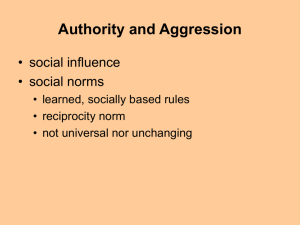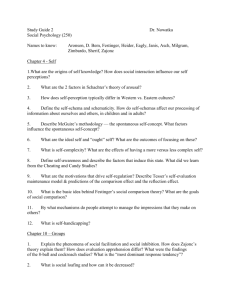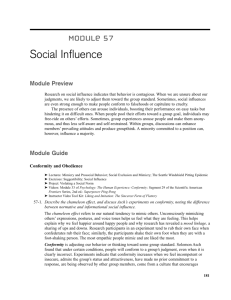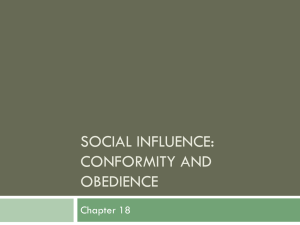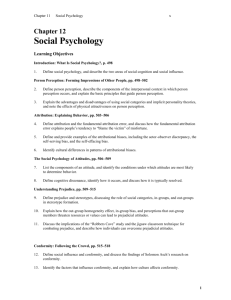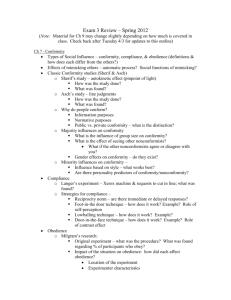Independent Behaviour
advertisement
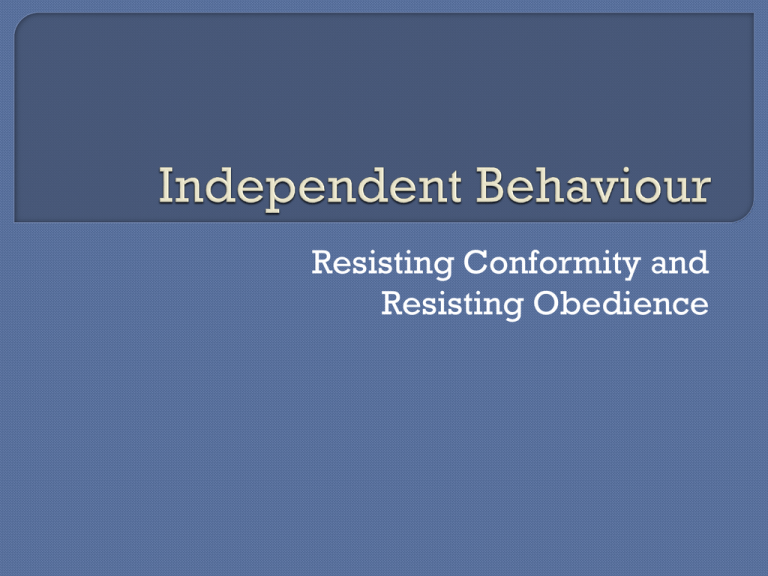
Resisting Conformity and Resisting Obedience In some cases, individuals can resist pressures to conform or obey and can maintain independent behaviour The role of personality has been studied and in particular a concept known as locus of control Locus of Control refers to a person’s perception of personal control over their own behaviour It is measured along a dimension of ‘high internal’ to ‘high external’ 1. Amanda doesn’t bother applying for the position of Head Girl because she feels she is not popular enough to win. 2. Isobel checks her horoscope every day to see if she is going to have a good or a bad day. 3. Richard feels confident that he will get the job he applied for because he has good exam results and did well in the interview. How does LOC affect conformity/obedience? High internals are active seekers of information that is useful to them, so rely less on the opinions of others (unlike externals) High internals are more achievement- oriented and so more likely to become leaders High internals are better able to resist coercion from others Imagine a society where everyone thinks the same… What would happen if they were suddenly exposed to alternative ideas…? Nemeth argues that if we are exposed to a different viewpoint, it is more likely to make us think about it, even if it is the view of a minority. E.g. the Campaign for Nuclear Disarmament and women’s suffrage. Reactance is where we change our views to a position opposite to that expected. For example, a CD with an explicit content warning might sell more. Bushman & Stack (1996) see such items as “forbidden fruit”. They measured peoples levels of “reactance” (i.e. high or low) and showed them warning labels, finding that they tend to influence whether or not a high reactance person will watch a film etc. or not. Mugny (1980) argues we are more likely to resist conformity if the minority group is one we identify with. If we feel we share a “psychosocial identity” with them, it doesn’t matter that we are doing something socially unacceptable by going with the minority. If the majority is not unanimous on their views then conformity is reduced. Asch found with just one other member of the group giving the correct answer, the conformity of the participant went down to 5.5%. Instead of Milgram’s situational explanation of obedience, we can take a dispositional explanation, which would argue that personalities differ and can influence levels of obedience. Milgram (1974) identified the “authoritarian personality” as one more likely to obey as they are intolerant of others, like structure and are submissive to authority. Page 201 In your notes use the subtitle “Techniques for increasing resistance to obedience” Copy out the technique column and then write the explanation column in your own words.



